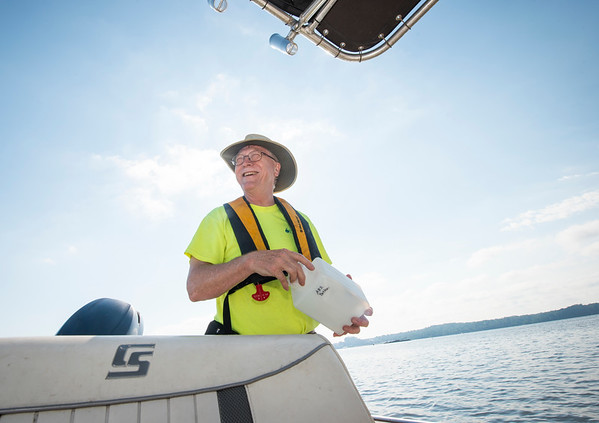For 35 years, Dr. Chris Jones has sampled Gunston Cove, a tributary to the Potomac. He has recently published a long-term study, tracking the ecosystem’s recovery. The results of his research indicate that submerged aquatic vegetation (SAV) have returned (previously, there was none) as a result of increased water clarity. SAV provide important habitats for fish and invertebrates in the Potomac River. While there is still a long-way to go, this study demonstrates that it is possible to recover ecosystems that have been damaged by pollution. You can read Recovery of a Tidal Freshwater Embayment from Eutrophication: a Multidecadal Study here.
Abstract:
Effective management of eutrophication in tidal ecosystems requires a thorough understanding of the dynamics of their responses to decreases in nutrient loading. We analyze a 34-year dataset on a shallow embayment of the tidal freshwater Potomac River, Gunston Cove, for long-term responses of ambient nutrient levels, light transparency measures, phytoplankton biomass, and coverage of submersed aquatic vegetation (SAV) to decreased nutrient loading. Point source loading of phosphorus, the nutrient most limiting primary production in this system, was greatly curtailed coincident with the study onset (1983/84) exhibiting a sharp decrease of 95% from peak loading levels. However, water column total phosphorus decreased much more slowly and gradually. Phytoplankton chlorophyll a did not show a distinctive decrease until 2000 and SAV responded strongly beginning in 2004. The habitat suitability model for SAV developed by Chesapeake Bay researchers was able to explain the recovery of SAV coverage based on data on light transparency and basin morphometry collected in this study. The study results were consistent with the alternative stable state theory with a sharp transition from a phytoplankton-dominated “turbid water” state to an SAV-dominated “clear water” state in a 2-year period from 2003 to 2005. The system eventually responded to nutrient load reductions, but the nonlinear and incomplete nature of this recovery and the two-decade delay illustrate the complexities of managing these systems.



